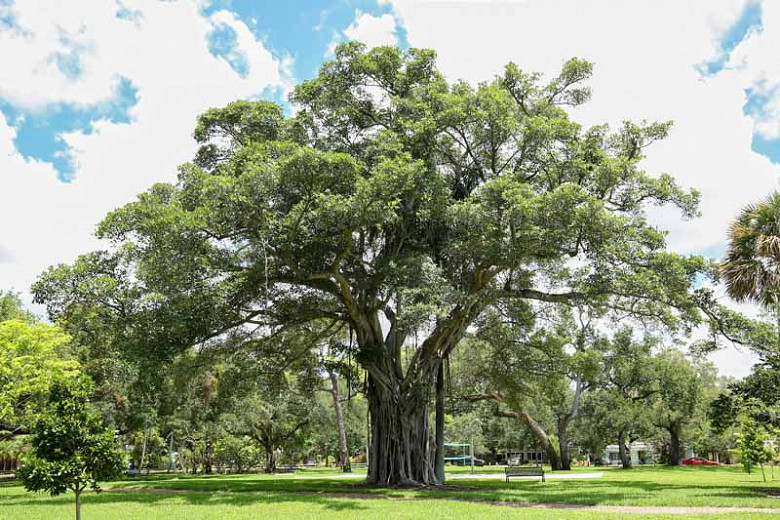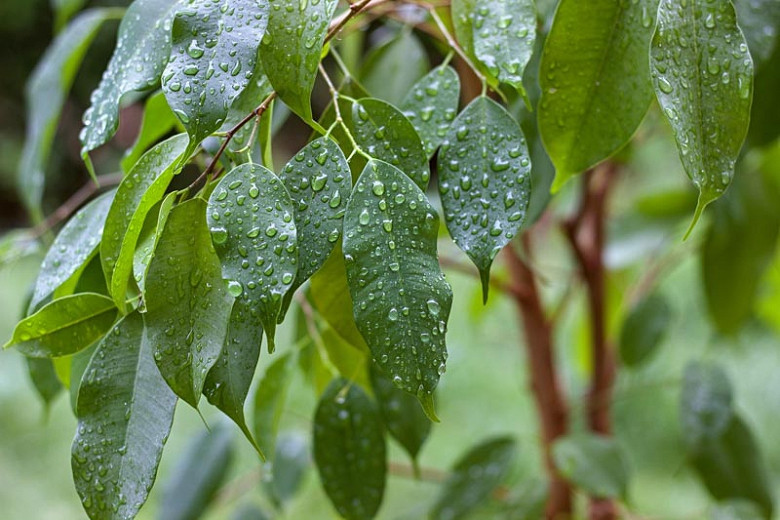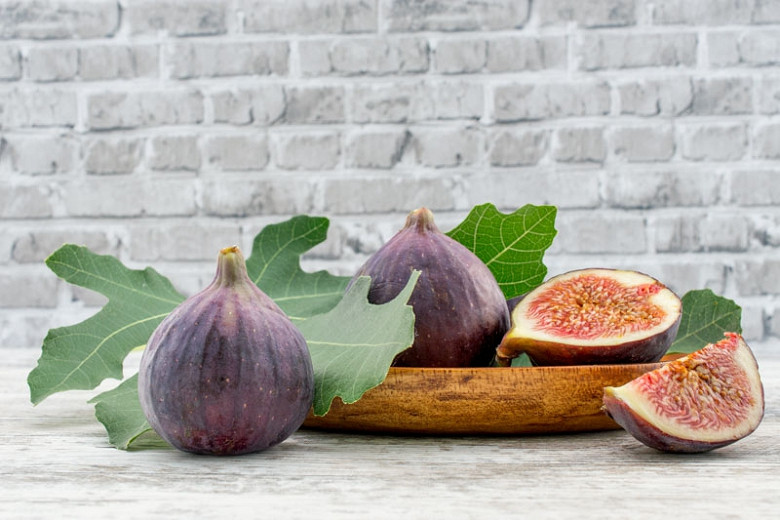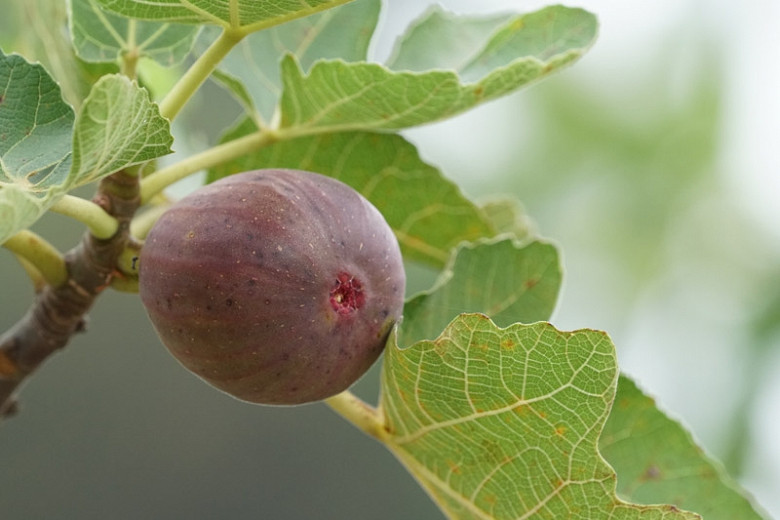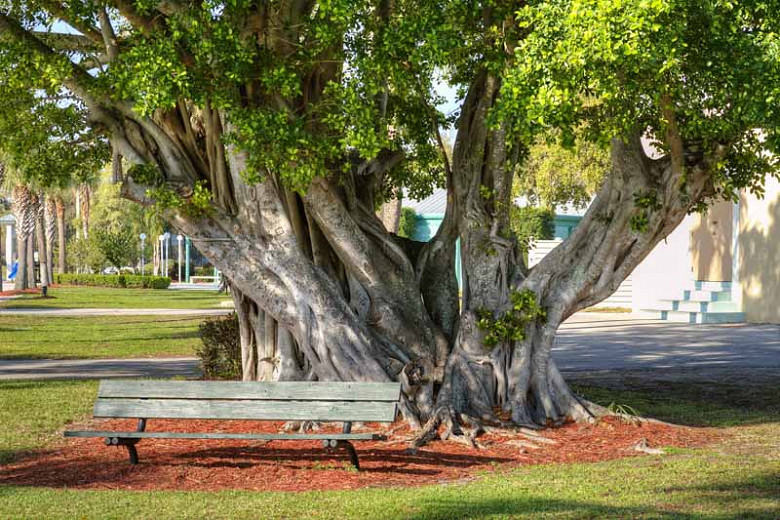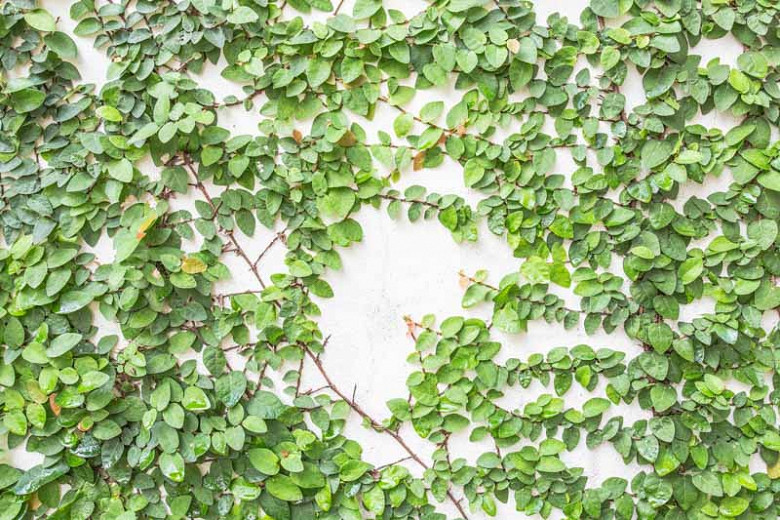Ficus aurea (Strangler Fig)
Ficus aurea (Strangler Fig) is a massive evergreen tree with a dense spreading canopy of large, bright green leaves and often interesting multi-stemmed trunks. Usually starting out as an epiphyte (growing on another tree), until its roots touch the ground, it strangles its host with large aerial roots, eventually becoming a free-standing tree in its own right. The alternate leaves, 2-5 in. long (5-12 cm), are ovate to elliptic, thick, shiny dark green above, paler green beneath. Blooming from spring to late summer, inconspicuous enclosed flowers are pollinated by a host-specific wasp inside the fig. They are followed by oval to round, fleshy figs, green to red, burgundy, or purple when ripe. Birds and other wildlife consume the figs. Thin and smooth in youth, the bark can become finely scaly, ashy to dark gray with age. Native to Florida, the northern and western Caribbean, southern Mexico and Central America south to Panama, Strangler Fig provides habitat, food and shelter for a host of tropical lifeforms including epiphytes in cloud forests and birds, mammals, reptiles and invertebrates. This is a large specimen tree or shade tree which is not recommended for small landscapes. It can be grown as a bonsai.
- Grows up to 40-60 ft. tall (12-18 m) and 20-60 ft. wide (6-18 m).
- Performs best in full sun to shade in clay to sandy, moist to occasionally wet soils. Highly drought tolerant, this plant is also tolerant of inundation with brackish water, and moderately tolerant to salty wind but not direct salt spray.
- No serious disease issues. Keep an eye out for aphids, scales, sooty mold. Fruit make a mess beneath the tree.
- Pruning is needed for a strong structure. The secondary roots which create many rigid trunks, once they reach the ground, need to be removed to keep a neat-looking landscape.
- Propagation is by seed or cuttings.
- Native to Florida, the northern and western Caribbean, southern Mexico and Central America south to Panama.
Requirements
| Hardiness | 10 – 11 |
|---|---|
| Plant Type | Trees |
| Plant Family | Ficus |
| Exposure | Full Sun, Partial Sun, Shade |
| Season of Interest | Spring (Early,Mid,Late)Summer (Early,Mid,Late)FallWinter |
| Height | 40' – 60' (12m – 18m) |
| Spread | 20' – 60' (6m – 18m) |
| Water Needs | Low, Average |
| Maintenance | Average |
| Soil Type | Clay, Loam, Sand |
| Soil pH | Acid, Alkaline, Neutral |
| Soil Drainage | Moist but Well-Drained, Well-Drained |
| Characteristics | Showy, Evergreen, Fruit & Berries |
| Native Plants | United States, Southeast, Florida |
| Tolerance | Drought, Salt, Wet Soil |
| Attracts | Butterflies |
